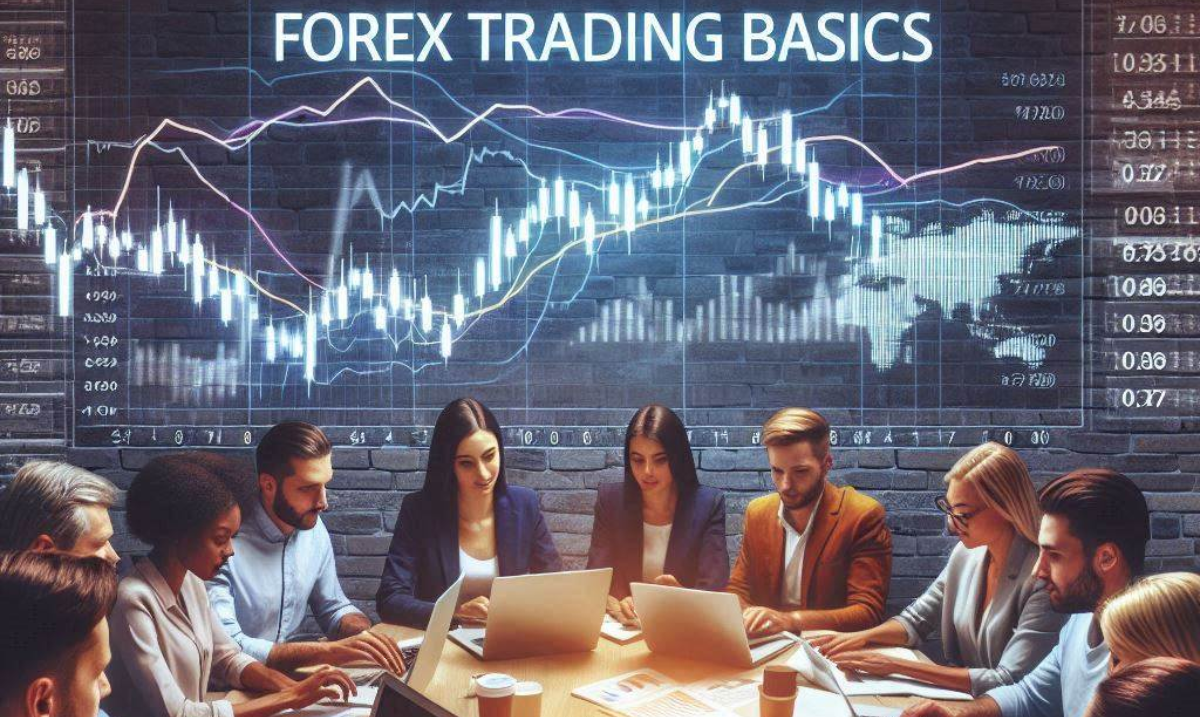What is Forex? The role of forex is to facilitate the exchange of one currency for another, enabling international trade, investment, and tourism. It also provides opportunities for traders to profit from currency price fluctuations. Forex is essential for global financial stability and liquidity, allowing businesses and governments to manage currency risk and conduct cross-border transactions smoothly.
If you’re new to trading, understanding what forex is can be the first step toward entering the exciting world of currency markets. Forex, or foreign exchange, is the global market where currencies are bought and sold every day. In this simple introduction for XM newbies, we’ll explain the basics of forex trading, how it works, and why it offers unique opportunities for traders around the world.
Understanding the Basics of Forex Trading

What Is Forex and How Does It Work?
Forex, short for foreign exchange, is the global marketplace for trading currencies. It is the largest and most liquid financial market in the world, with a daily trading volume exceeding $7 trillion.
Forex trading involves buying one currency and simultaneously selling another, usually quoted in pairs (e.g., EUR/USD). Prices fluctuate continuously based on supply and demand and global economic influences.
Forex Operates 24/5
Unlike the stock market, the Forex market operates 24 hours a day, five days a week, covering major global trading sessions—Asian, European, and North American. This provides flexibility and continuous trading opportunities. Traders on platforms like XM benefit from clearly defined XM market hours, helping them align their strategies with the most active and liquid periods.
Is Forex Trading Safe and Legal?
Forex trading is legal and regulated in most countries. Safety depends largely on choosing a licensed broker, such as XM, which is regulated by authorities like ASIC, CySEC, and the FSC.
XM also provides negative balance protection and secure platforms to ensure that traders do not lose more than their deposit. Still, Forex trading carries risk and should not be seen as a get-rich-quick scheme—especially for beginners.
Key Forex Concepts for XM Beginners

Essential Forex Terms to Know
Before jumping into Forex, beginners should understand the following key terms:
- Currency pairs: Consist of a base and a quote currency (e.g., EUR/USD).
- Pip: The smallest unit of price movement, typically 0.0001.
- Lot size: Includes Standard (100,000 units), Mini (10,000), and Micro (1,000).
- Leverage: Enables control over larger positions with smaller capital.
- Spread: The difference between the buy (ask) and sell (bid) price, often referred to as the bid ask spread XM traders encounter when opening or closing a position.
Trading Costs and Potential Profits
When trading with XM, typical costs include:
- Spread: The main cost, especially with XM’s commission-free accounts.
- Swap fees: Charged for holding positions overnight.
- Commissions: Apply only to certain instruments like share CFDs.
- Inactivity fees: Charged after 90 days of no account activity.
Profitability depends on price movement, trade volume, leverage, and your trading strategy.
Common Mistakes Made by New Traders
New traders often fall into traps such as:
- Over-leveraging: Taking too much risk with borrowed capital.
- Poor risk management: Not using stop-loss orders or risking too much per trade.
- Emotional trading: Allowing fear or greed to guide decisions.
- Skipping demo accounts: Trading live without practice can be costly.
- Chasing the market: Entering trades too late due to hype or FOMO.
XM helps traders avoid these mistakes through free education, demo accounts, and negative balance protection.
How to Start Trading Forex with XM

Simple Steps to Begin
Starting your trading journey with XM is easy:
- Register an account on the XM website.
- Verify your identity by submitting KYC documents.
- Choose an account type: Micro, Standard, or Ultra Low.
- Download MT4 or MT5 trading platforms.
- Fund your account via bank transfer, card, or e-wallet.
- Practice on a demo account before trading with real money.
- Start live trading when you’re confident in your strategy.
XM Platforms and Tools
XM supports powerful tools to help traders:
- MetaTrader 4 (MT4) and MetaTrader 5 (MT5): Leading industry platforms.
- Economic calendars: For tracking major financial events.
- Technical indicators: Such as RSI, Moving Averages, MACD, Bollinger Bands, etc.
- Trading signals and market analysis: Accessible via the XM client portal.
Analyzing the Forex Market the Smart Way

Two Primary Analysis Methods
Successful traders use two main types of market analysis:
- Technical analysis: Focuses on price charts and indicators to spot trends and patterns.
- Fundamental analysis: Considers economic news, interest rate changes, and geopolitical events that influence currencies.
Many traders combine both methods for a more well-rounded strategy.
How XM Supports Market Analysis and Learning
XM offers:
- Daily market analysis
- Live webinars and seminars
- Free educational materials and video tutorials
These resources help traders—especially beginners—learn trading effectively and grow with confidence.
Forex trading can be a rewarding endeavor, but it requires knowledge, discipline, and a trusted broker. As a beginner, starting your journey with XM offers you a strong foundation through secure platforms, beginner-friendly account types, educational tools, and strong regulatory backing. Whether you’re aiming to trade part-time or pursue serious financial goals, continuous learning is key.
Disclaimer: Trading Forex involves risk, and it’s important to trade responsibly and only invest what you can afford to lose.

Darius Elvon is a financial content strategist and editor with a strong focus on clarity and accuracy. He crafts easy-to-follow XM articles, covering promotions, trading tools, and platform updates to enhance user engagement. Email: [email protected]

 Tiếng Việt
Tiếng Việt